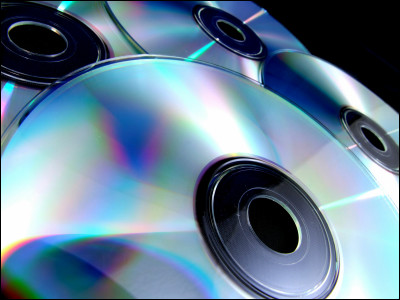Google is promoting 'Project Cavier' aiming to introduce an open and free media format to compete with Dolby

Google is promoting a project ' Project Caviar ' to develop a royalty-free and open source media format compatible with HDR video and 3D audio that competes with Dolby Atmos and Dolby Vision, according to the IT news site Protocol. This report is based on the presentation video obtained from
Google's Project Caviar to compete with Dolby Atmos, Vision - Protocol
https://www.protocol.com/entertainment/google-dolby-atmos-vision-project-caviar
After pushing AV1 codec, Google goes after Dolby with HDR and audio standards | Ars Technica
https://arstechnica.com/gadgets/2022/09/google-and-youtube-to-take-on-dolby-with-free-hdr-and-audio-standards/
In order for hardware manufacturers to release equipment compatible with Dolby Atmos and Dolby Vision, Dolby must be paid a license fee. For example, in order to use Dolby Atomos on Xbox, you need to pay $ 15 (about 2100 yen) per license.
Also, according to Giles Baker, vice president of Dolby's cloud media solutions division, Dolby charges TV makers $2 (about 280 yen) to $3 (about 420 yen) for Dolby Vision license fees. That's what I'm talking about. According to Protocol, 25% of Dolby's 2021 revenue came from imaging patents such as Dolby Atomos and Dolby Vision.
In order to avoid paying the Dolby Vision license fee, Samsung, a consumer electronics manufacturer, jointly developed the royalty-free and open dynamic metadata technology standard for HDR `` HDR10 + '' with 20th Century Fox and Panasonic.
However, attempts to popularize HDR10+ have largely failed, says Protocol. Dolby's brand power is so strong that instead of charging licensing fees for streaming services such as Netflix, Disney + and HBO Max, Dolby has admitted to selling premium features as an evangelist for Dolby Vision. This strategy worked pretty well, and HDR10+ couldn't break Dolby Vision's stronghold.
Dolby CFO Robert Park said, “It was great to have a streaming service partner wanting to distribute our technology. , probably the brand would never have grown so far.We have a legitimate license for playback devices.'
Like Samsung, Google has been active in open media and focused on developing codecs. For example, in 2009, it acquired On2, a video codec maker, and released WebM, a container format that uses VP8.
Summary of Google's video format 'WebM' aiming for HTML5 standard - GIGAZINE

In addition, Google has launched the industry group 'Alliance for Open Media' to develop and manage the royalty-free video codec ' AOMedia Video Codec 1.0 (AV1) '.
Video codec 'AV1' led by Google and Netflix officially released, expected to spread 4K streaming - GIGAZINE

Project Caviar focuses on HDR video formats and 3D audio that enable richer, more immersive media playback while leveraging existing codecs such as Dolby Atmos and Dolby Vision instead of proprietary codecs like WebM and AV1. It is said that it is a project that has been done.

Roshan Barriga, group product manager at Google, did not mention Dolby in his presentation, but he still made it clear that he was trying to establish a format that would replace existing HDR video and 3D audio. . In addition to Google, companies participating in the project are companies affiliated with Alliance for Open Media such as Amazon, Netflix, Meta, Intel, Microsoft, and Samsung. At the time of writing, we are developing a new 3D audio format called Immersive Audio Container .
However, even if you push out the Immersive Audio Container by itself, it can be the second dance of HDR10+. Therefore, Google seems to be thinking of establishing a new standard that handles both HDR 10 + and Immersive Audio Container, managed by an industry group, and made available free of charge to hardware manufacturers and service providers.

The cornerstone of that strategy is YouTube, Google's video sharing service. Support for YouTube is no longer essential for video playback devices such as smart TVs. Mr. Bariga said in a presentation that YouTube will be compatible with a new royalty-free format, and appealed to manufacturers developing video playback equipment to choose a new format. Google has been actively working with companies such as Roku to promote AV1, and it is believed that Project Cavier will follow the same strategy.
Related Posts:
in Software, Web Service, Posted by log1i_yk






